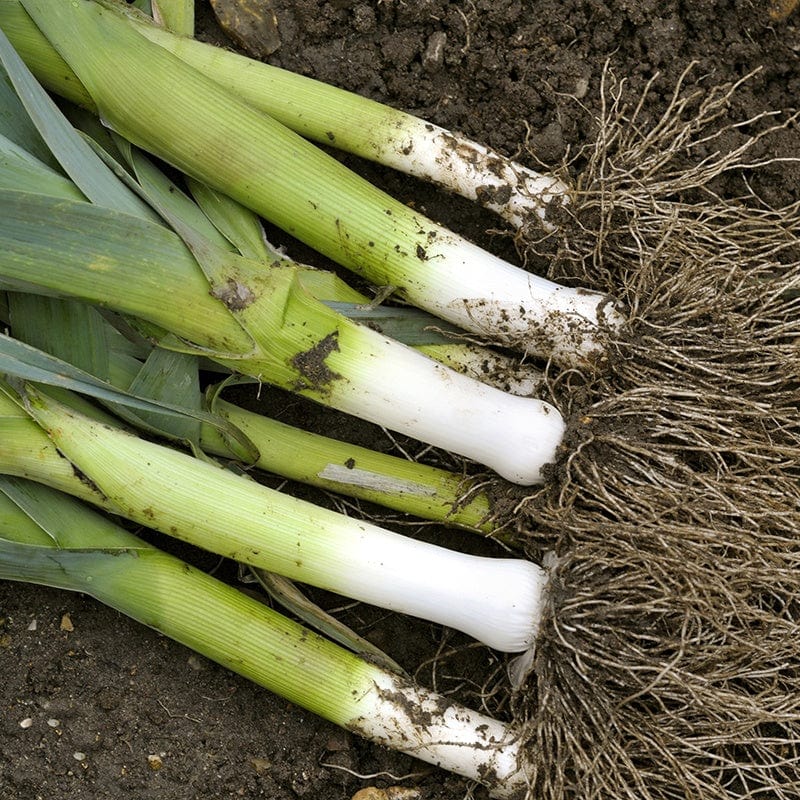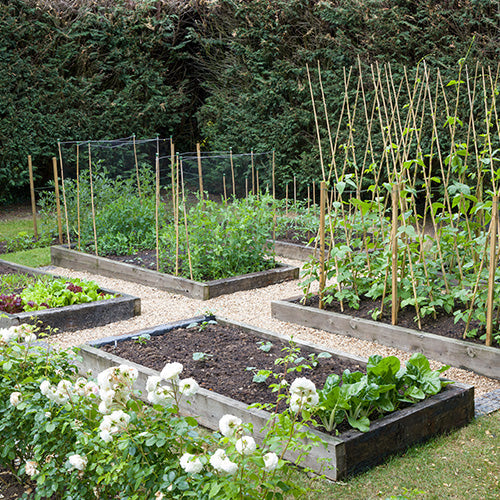Earthing up
Keeping your leek plants blanched is essential to achieving the delicious white stems that they are characteristically known for. You should therefore gently mound up the dry soil around the plants to shield them from sunlight. This will prevent them from turning green, keep them white and tender and increase stem length. This also helps to keep your plants stable and protected from wind.
Watering
You should top up younger plants with water as necessary. Once established, leeks should be watered only when needed, specifically during dry spells. As mentioned above, leeks grown in containers will need more frequent watering as the soil can be prone to drying out quickly.
Weeding
You should keep your growing area weed-free, as this will prevent your leeks from competing for resources. Be careful around the stems, an onion hoe or a narrow draw hoe will help to prevent damage to them. Don't allow soil to fall between the leaves when weeding, as this will make for gritty stems when harvested.
Unlike some other plants, leeks do not produce thick foliage that overshadows weeds once established. As a result, managing weeds effectively throughout their growth is important for their success.
Mulching
A good layer of fertiliser or well-rotted manure will help plants reach their full potential by providing the nutrients they need. In addition, this can help to prevent weed growth and keep the soil beneath moist.

 How to Grow Leeks from Seed
How to Grow Leeks from Seed

 Ground Prep
Ground Prep

 How and When to Sow Leeks
How and When to Sow Leeks

 Plant Care
Plant Care

 Problems
Problems
How to Grow
Ground Preparation
Sowing
Plant Care
Problems



































Leave a comment
All comments are moderated before being published.
This site is protected by hCaptcha and the hCaptcha Privacy Policy and Terms of Service apply.